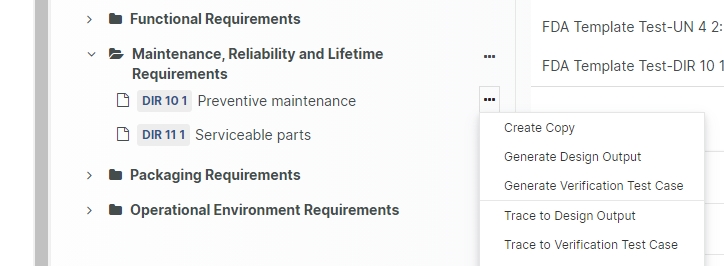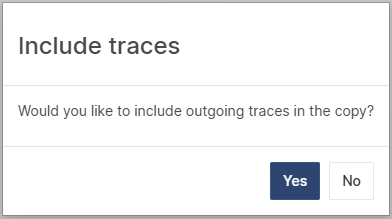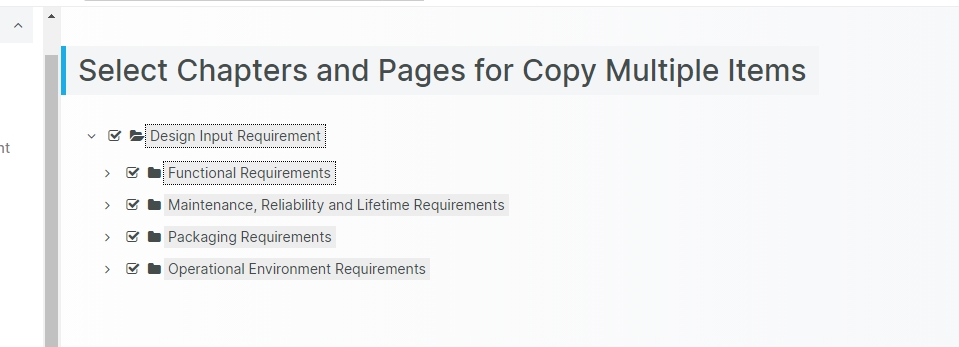Copy Design Control Items
The copy function can come in handy if an existing Document Object is similar to the new Document Object you want to create. The new object will be placed in the same chapter as the source object.
How to copy a Document Object in the Document Object Form
Open an existing Document Object in read mode.
In the Actions menu, select Create Copy to create a new Document object with the attribute values copied from the original document object.

The new object is displayed in edit mode. You can edit and save or cancel the action.
How to copy a Document Object in the Chapter View
In Chapter View, click on the Ellipsis button next to a Document Object and select Create Copy.

You now get the option to include all the source's outgoing traces (including traces to Issues etc.) in the copy.

This will create a new Document Object with the attribute values copied from the original document object. The new object is displayed in edit mode. You can edit and save or cancel the action.
How to copy multiple Document Objects in a single action
In Chapter View, click on the Ellipsis button for the root chapter and select Create Copy Multiple.
In the following dialogue, select the Document Objects to copy and click OK.

The new objects are not displayed in edit mode but automatically committed as a part of the Copy operation.
